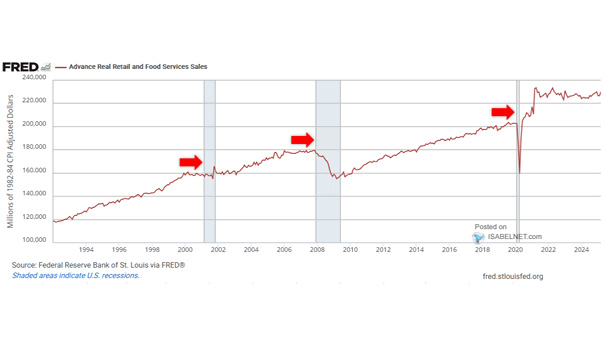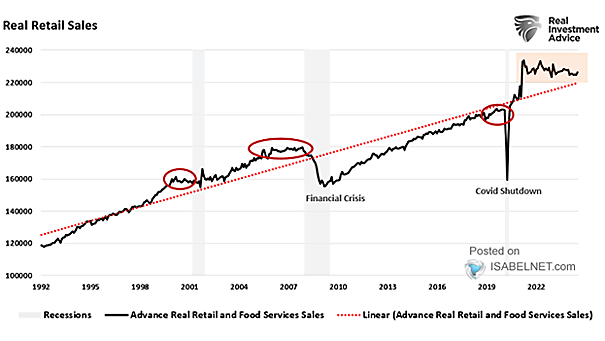U.S. Real Retail Sales and Recession
U.S. Real Retail Sales and Recession In October, U.S. real retail sales stand at 0.27% YoY. About 70% of U.S. GDP is personal consumption. In the past, real retail sales trended sideways before the recession began.


